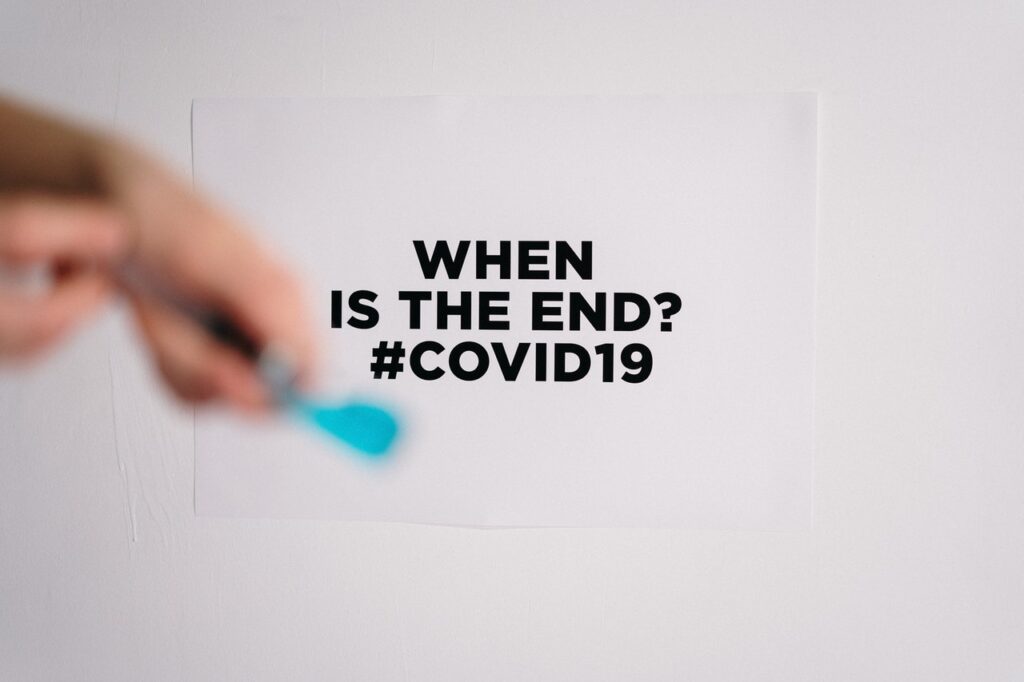National wastewater viral activity levels for COVID-19 have been very high since December. (It wasn’t your imagination that everyone seemed sick over the holidays.) Currently, wastewater data is the best way to track COVID infections as most people are testing at home and not reporting their status. And currently, wastewater levels indicate that about 2 million Americans are getting infected each day.
This means that we are now in the second-highest COVID surge, after Omicron. As we hover around the fourth year of living with COVID, it is clear COVID could be endemic. With surges such as we are seeing now, personal safety measures are still very much needed—including (and especially) staying up to date on COVID vaccines.
Luckily, there is a bit of good news when it comes to the recent COVID surge, thanks to biotech innovations.
COVID vaccines work – if people get them
Hospitalizations due to the ongoing surge are considerably lower than expected, sitting at 4,971 during the week of Dec. 24, 2023. Additionally, COVID mortality and morbidity continue to stay lower than during the pandemic era.
According to the Centers for Disease Control and Prevention (CDC), at the height of the pandemic, weekly COVID hospital admissions sat at 115,455, while the weekly percentage of deaths due to COVID rate sat at a staggering 29.9% (reported on Jan. 9, 2021). However, as the recent surge has taken hold, weekly new hospitalizations due to COVID rates are 34,798 with a weekly percentage death due to COVID rate of only 3.6% (reported Dec. 30 2023).
You can thank biotech when it comes to the improvement of COVID hospital admission rates, as well as mortality and morbidity. The updated COVID vaccines released last fall were based on the “XBB.1.5 variant” present in February. According to a Kaiser Permanente study, the updated vaccine “has some cross-reactivity with JN.1 in lab studies for inducing neutralizing antibodies to the virus,” explained the Los Angeles Times.
To put it another way: vaccines work.
But for vaccines to work, people need to get them. Unfortunately, to date, only 14% of Americans are fully up to date on COVID boosters, through November 4, 2023.
And seniors continue to be the ones most at risk. “More than 81% of COVID-19 deaths occur in people over age 65,” says the CDC. “The number of deaths among people over age 65 is 97 times higher than the number of deaths among people ages 18-29 years.”
Why vaccine education and access are key
Companies, doctors, and local, state, and federal governments need to keep up the heat on vaccine education and access.
One good example: Novavax’s Choose to Protect Campaign. In tandem with the release of their protein-based COVID vaccine, which gives patients even more options, Novavax launched their campaign to provide “patients with information and relevant options for the vaccine with the goal to drive vaccination rates in the U.S. and abroad.”
Another example of good COVID-related public health policy is GSK’s COiMMUNITY Initiative, “a multi-pronged initiative…to talk about tangible implementation for increasing vaccination rates. It also includes funding and expanding Vaccine Track’s public data.” This program combines data and community outreach to empower patients to make the best decisions regarding their health.
But it is not just community outreach that is important when it comes to keeping COVID booster rates high. Programs such as the Helping Adults Protect Immunity (HAPI) Act and the Protecting Seniors through Immunization Act can help ensure vaccine access is both available and equitable.
Biotech’s COVID long game
The biotech sector is making sure there are vaccines to match new variants. The types of vaccines available are globally diverse as well. With the new Novavax vaccine coming out last fall, patients have the option of receiving either a mRNA vaccine or the more traditional protein-based vaccines. This allows those who might react more strongly to the mRNA vaccine to have more choices—as “Novavax appeared less likely than mRNA shots to cause side effects like headache and fatigue.” The Novavax vaccine also has a longer shelf life and does not need to be kept in ultra-cold storage, making it easier to both keep and transport.
Additionally, COVID therapeutics are helping patients get better sooner and avoid hospitalization. Treatments such as Paxlovid can be taken at home and reduce the risk of hospitalization or death by around 50%.
“People now have safe and effective treatment options that can prevent serious disease, reduce hospitalization, and may also lower the risk of long COVID-19 symptoms,” said State Public Health Officer and California Department of Public Health Director, Dr. Tomás J. Aragón, as reported by Axios.
“However, COVID-19 treatments are underutilized, particularly among communities that have been hardest hit by COVID-19. As soon as someone has new symptoms such as a runny nose, cough, sore throat or fever, they should immediately test for COVID-19 and seek treatment if they are positive.”
The road ahead for long COVID
Ultimately, we all need to stay vigilant when it comes to COVID, both when considering the needs of those in our community who are immunocompromised, and because the effects of repeat exposure and long COVID are still not fully understood.
As Bio.News has reported, “about 10-30% of COVID patients, including asymptomatic, experience one or more long COVID or post-COVID condition (PCC) symptoms for more than three months. The majority will overcome the symptoms; however, some contract a lifetime condition. Approximately 5-15% of PCC patients contract a long-term disabling symptom.”
Currently, there is no treatment for long COVID, but biotech is putting the puzzle pieces together. Until then, patients who have developed long COVID can work with their doctor to treat symptoms.
As for the rest of us? Let’s get vaccinated, stay up to date on boosters, and take necessary precautions to keep ourselves and our loved ones safe.




